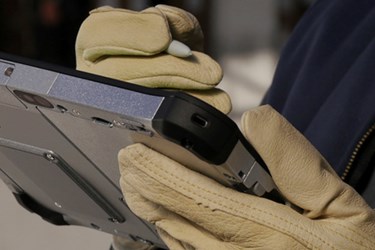Former VAR Tells How He Transitioned To "Products-as-a-Service"


John Templeton, president of Millennium Technologies, said 10 or 12 years ago, more than 50 percent of his business was leasing. That turned out to be a head start on transitioning to an as-a-Service business model — “Products-as-a-Service,” in this case. “The basic premise of the as-a-Service model is a ‘lease,’” Templeton explains, “but from a taxing and legal point of view, it is not a lease. Therefore, the end user gets to write off the entire thing as an operational expense, which to many people is a big benefit. At the end of the term, you can renegotiate with us or send it back. The idea is to create an atmosphere where the end user understands that they can use the hardware for the term, and then they get all new equipment.”
Millennium, which provides data collection hardware and hardware management solutions and services, was also fortunate with respect to its staff’s ability to make the transition to the new business model. “I haven’t had to make any changes whatsoever. The staff simply needed to be educated on how to sell the concept of this type of agreement,” Templeton says. The company did adjust the way it compensates its sales force. According to Templeton, there are two options: paying a monthly recurring amount based on the total commission amount or paying the entire commission up front. “I think it is a decision you make based on your cash flow and the needs of your sales reps,” he comments. Millennium uses both compensation options with its sales team.
Templeton says making the transition to Products-as-a-Service is a trial-and-error process. “I think the one big mistake everybody makes is that they are used to positioning a discount for a product and then allowing the customer to ask about financing.” He says for example, if the product sells for 100 dollars, and you discount it 20 percent, then the sales price would be 80 dollars. If you have already given the discount, you are basing the monthly payment on the 80-dollar price. He says, instead, you should tell the customer the product costs 100 dollars and the customer can pay “x” for a term of three or five years. He says the difference is that you are not immediately discounting the margin. He comments that the channel — both VARs and vendors — is “over discounted.” He says the way to raise your value is by attaching other services to the products you sell, like hardware service. He adds, “We don’t just sell the service contract; we manage the contract for the customers. We log every single serial number. We prorate every single add-on to keep it as one contract.”
Templeton says adding service also can help with cash flow. “One of the ways you can really help yourself is if you attach service contracts to the devices that you’re selling. You keep the service contract outside of the agreement — make that a separate entity unto itself. Therefore, you get to collect the service revenue up front, which will dramatically help you to fund the rest of the Products-as-a-Service agreement."
For VARs considering changing to the as-a-Service business model, Templeton says to first discuss the business model with your attorney and your tax accountant to avoid making mistakes that would hinder the growth of your business.
Templeton spoke to Jameson Publishing and Business Solutions magazine President Jim Roddy in this exclusive Executive-To-Executive interview conducted at the 2013 ScanSource Partner Conference in Austin, TX. You can hear the entire interview by clicking here.
